
Organic farming, also known as ecological farming or biological farming, is an agricultural system that uses fertilizers of organic origin such as compost manure, green manure, and bone meal and places emphasis on techniques such as crop rotation and companion planting. It originated early in the 20th century in reaction to rapidly changing farming practices. Certified organic agriculture accounts for 70 million hectares globally, with over half of that total in Australia. Biological pest control, mixed cropping, and the fostering of insect predators are encouraged. Organic standards are designed to allow the use of naturally-occurring substances while prohibiting or strictly limiting synthetic substances. For instance, naturally-occurring pesticides such as pyrethrin are permitted, while synthetic fertilizers and pesticides are generally prohibited. Synthetic substances that are allowed include, for example, copper sulfate, elemental sulfur, and veterinary drugs. Genetically modified organisms, nanomaterials, human sewage sludge, plant growth regulators, hormones, and antibiotic use in livestock husbandry are prohibited. Organic farming advocates claim advantages in sustainability, openness, self-sufficiency, autonomy and independence, health, food security, and food safety.

The following outline is provided as an overview of and topical guide to organic gardening and farming:
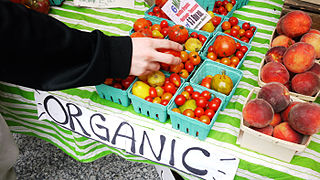
The organic movement broadly refers to the organizations and individuals involved worldwide in the promotion of organic food and other organic products. It started during the first half of the 20th century, when modern large-scale agricultural practices began to appear.
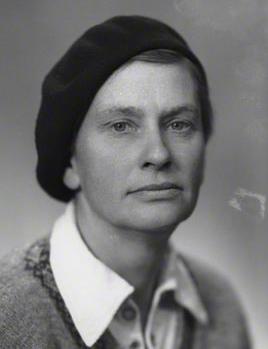
Lady Evelyn Barbara Balfour, was a British farmer, educator, organic farming pioneer, and a founding figure in the organic movement. She was one of the first women to study agriculture at an English university, graduating from the institution now known as the University of Reading.
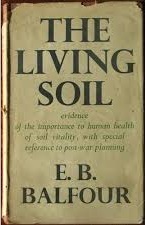
The Living Soil (1943) by Lady Eve Balfour is considered a seminal classic in organic agriculture and the organic movement. The book is based on the initial findings of the first three years of the Haughley Experiment, the first formal, side-by-side farm trial to compare organic and chemical-based farming, started in 1939 by Balfour, on two adjoining farms in Haughley Green, Suffolk, England.
The Haughley Experiment was the first comparison of organic farming and conventional farming, started in 1939 by Lady Eve Balfour and Alice Debenham, on two adjoining farms in Haughley Green, Suffolk, England. It was based on an idea that farmers were over-reliant on fertilizers, that livestock, crops and the soil should be treated as a whole system, and that "natural" farming produced food which was in some way more wholesome than food produced with more intensive methods. Lady Balfour believed that mankind's future and human health were dependent on how the soil was treated, and ran the experiment to generate scientific data that would support these beliefs.
IFOAM – Organics International is a worldwide organization advocating for organics, with over 700 affiliates in more than 100 countries and territories.
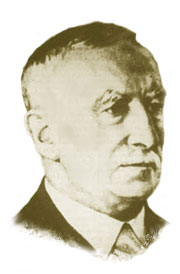
Sir Albert Howard was an English botanist. His academic background might have been botany. While working in India he was generally considered a pathologist; this more than likely being the reason for his consistent observations of the value of compost applications being an increase in health. Howard was the first Westerner to document and publish the Indian techniques of sustainable agriculture. After spending considerable time learning from Indian peasants and the pests present in their soil, he called these two his professors. He was a principal figure in the early organic movement. He is considered by many in the English-speaking world to have been, along with Eve Balfour, one of the key advocates of ancient Indian techniques of organic agriculture.
Biodynamic agriculture is a form of alternative agriculture based on pseudo-scientific and esoteric concepts initially developed in 1924 by Rudolf Steiner (1861–1925). It was the first of the organic farming movements. It treats soil fertility, plant growth, and livestock care as ecologically interrelated tasks, emphasizing spiritual and mystical perspectives.
An Agricultural Testament is Sir Albert Howard's best-known publication, and remains one of the seminal works in the history of organic farming agricultural movement. Dedicated to his first wife and co-worker Gabrielle, herself a plant physiologist, it focuses on the nature and management of soil fertility, and notably explores composting. At a time when modern, chemical-based industrialized agriculture was just beginning to radically alter food production, it advocated natural processes rather than man-made inputs as the superior approach to farming. It was first published in England in 1940, with the first American edition in 1943.
The Principles of Organic Agriculture were established by the International Federation of Organic Agriculture Movements (IFOAM) in September 2005. They are aspirations for organic farming. The Principles were approved by the General Assembly of IFOAM on September 25, 2005.

Traditional farming was the original type of agriculture, and has been practiced for thousands of years. All traditional farming is now considered to be "organic farming" although at the time there were no known inorganic methods. For example, forest gardening, a fully organic food production system which dates from prehistoric times, is thought to be the world's oldest and most resilient agroecosystem. The industrial revolution introduced inorganic methods, most of which were not well developed and had serious side effects. An organic movement began in the 1940s as a reaction to agriculture's growing reliance on synthetic fertilizers and pesticides. The history of this modern revival of organic farming dates back to the first half of the 20th century at a time when there was a growing reliance on these new synthetic, non-organic methods.

Organic food, ecological food, or biological food are foods and drinks produced by methods complying with the standards of organic farming. Standards vary worldwide, but organic farming features practices that cycle resources, promote ecological balance, and conserve biodiversity. Organizations regulating organic products may restrict the use of certain pesticides and fertilizers in the farming methods used to produce such products. Organic foods are typically not processed using irradiation, industrial solvents, or synthetic food additives.
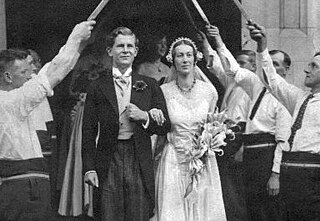
Henry Rolf Gardiner was an English rural revivalist who helped to bring back folk dance styles including Morris dancing and sword dancing. He also founded groups significant in the British history of organic farming; his forestry methods were far ahead of their time and he was a founder member of the Soil Association. He sympathised with Nazism and participated in inter-war far right politics. He organised summer camps with music, dance and community aims across class and cultures.

Jorian Edward Forwood Jenks was an English farmer, environmentalism pioneer and fascist. He has been described as "one of the most dominant figures in the development of the organic movement".

Frank Newman Turner, NDA, NDD, FNIMH, was a British pioneering organic farmer, writer and broadcaster, who, based on his experience of natural treatment of animals, later became a consulting medical herbalist and naturopath. His books Fertility Farming, Fertility Pastures, and Herdsmanship are regarded as classics of practical organic husbandry.
Friend Sykes (1888–1965) was an English organic farmer and writer.

Edgar J. Saxon (1877-1956) was a British environmentalist, naturopath and alternative health writer. He was a pioneer of the organic movement.
Guy Theodore Wrench was a British agronomist, nutritionist, and physician. He was a pioneer of the organic movement.
Dinah Williams born Dinah Eiluned Lyon Jones was a British organic farmer. She was an early member of the Soil Association and she owned the first Welsh dairy farm to be recognised as organic.











